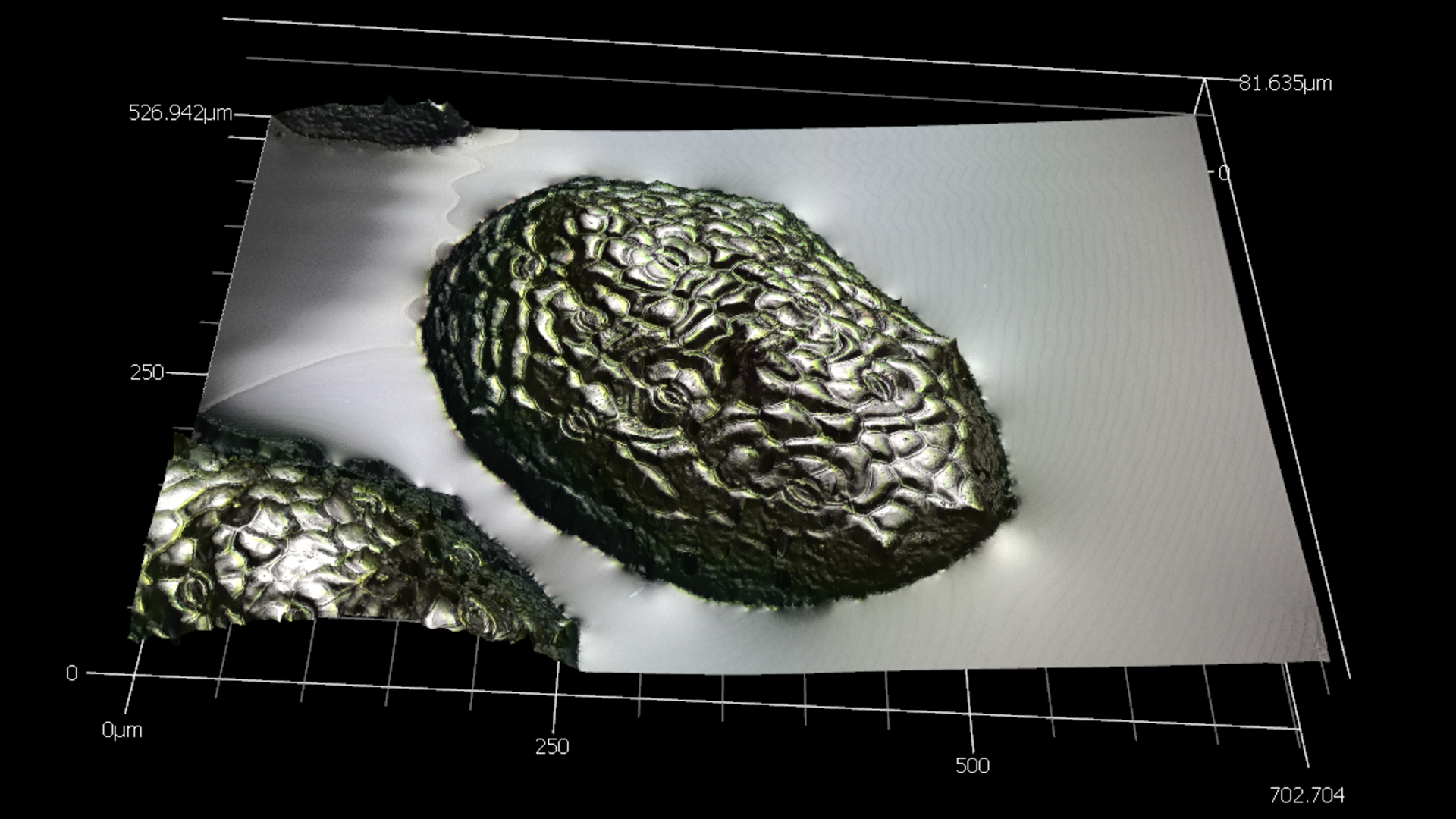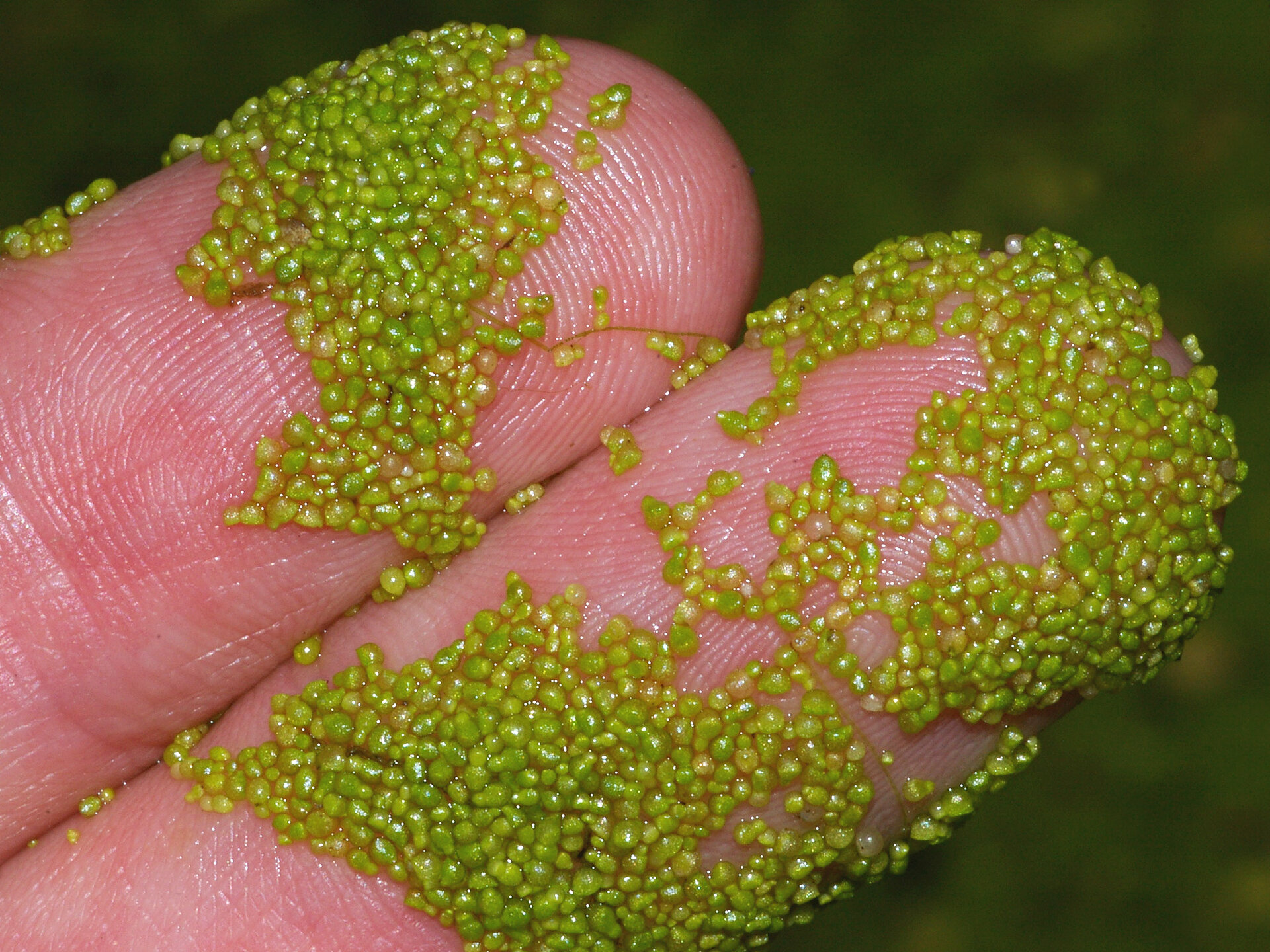Future Mars astronauts may chomp on Earth's tiniest flowering plant to survive
Watermeal exists in clumps no larger than a pinhead but could be an essential foodstuff and source of oxygen for humans in space.

The smallest flowering plant on Earth could have a huge role to play in humanity’s exploration of space. Watermeal, or Wolffia, is found floating on the surfaces of lakes and ponds in Asia, gathering in pinhead-sized clumps on our planet. When carried to space, watermeal could provide both food and oxygen for astronauts.
As humanity prepares for the next era of human-crewed space exploration, which will focus on longer missions and sojourns to the moon’s surface (and even Mars'), sustainability is key. That means a small sort of foodstuff that astronauts can carry with them and grow in all kinds of gravitational environments would be incredibly useful.
To see if watermeal fits the bill, scientists from Mahidol University in Thailand have been testing this rootless, flowering plant under conditions of hypergravity — up to 20 times that found at Earth’s surface — for weeks and months at a time. They do this by spinning the substance in an 8-meter-wide (26.2-foot-wide)centrifuge with four arms located at the European Space Agency (ESA) technical center in the Netherlands.
"We became interested in watermeal because we wanted to model how plants respond to changing gravity levels," team leader and Mahidol University researcher Tatpong Tulyananda said in a statement. "Because watermeal doesn’t have any roots, stems, or leaves, it is basically just a sphere floating on a body of water. That means we can focus directly on the effects that gravity shifts will have on its growth and development."
Related: Space food: Why Mars astronauts won't have to hold the fries
A tiny meal fit for an astronaut
Watermeal presents itself as a viable choice to sustain astronauts due to the fact that it produces a lot of oxygen through photosynthesis, Tatpong added, explaining the plant is also a good protein source.
"[Watermeal] has been consumed in our country for a long time — used with a fried egg [in] soup, or eaten as part of a salad," the plant space biology expert continued. "You consume 100% of the plant when you eat it, so it holds promise in terms of space-based agriculture.
Get the Space.com Newsletter
Breaking space news, the latest updates on rocket launches, skywatching events and more!
"Another advantage of watermeal is that it is quite a short-lived plant, so we can study its entire life cycle within five to 10 days."
During the testing, watermeal is placed in boxes fitted with LEDs that simulate natural sunlight and is left to grow at 20g (1g is equal to average Earth gravity at the surface of our planet). The Large Diameter Centrifuge (LDS) can spin containers of watermeal at up to 67 revolutions per second in six gondolas placed along its arms.

"Our two weeks of experimentation give us access to two generations of watermeal overall," Tatpong said. "What we do next is examine the plants directly, then render extracts into a solid pellet form that we will take home to study. Then we can put these samples through detailed chemical analysis to gain insights into the broad spectrum of watermeal’s hypergravity response."
Prior to taking watermeal for a spin and testing it at extremely high gravity, Tatpong and colleagues had been testing the tiny plant using clinostats — devices that continuously shift orientation to simulate weak gravity or “microgravity.”
"So far, we have seen little to no difference between plant growth at 1g and simulated microgravity, but we want to extend our observations to get an idea of how the plants react and adapt across the whole range of gravity environments," Tatpong concluded.
Join our Space Forums to keep talking space on the latest missions, night sky and more! And if you have a news tip, correction or comment, let us know at: community@space.com.

Robert Lea is a science journalist in the U.K. whose articles have been published in Physics World, New Scientist, Astronomy Magazine, All About Space, Newsweek and ZME Science. He also writes about science communication for Elsevier and the European Journal of Physics. Rob holds a bachelor of science degree in physics and astronomy from the U.K.’s Open University. Follow him on Twitter @sciencef1rst.









